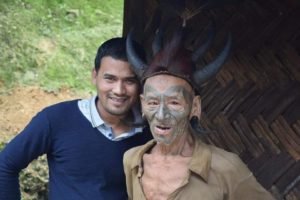The Konyak Tribe: portraits of a vanishing culture
The Konyak tribe is one of the major Naga ethnic groups living in the northeastern region of India, particularly in the state of Nagaland, with some communities also found across the border in Myanmar.
They are traditionally known for their distinct cultural identity, which includes elaborate face and body tattoos, especially among the older men. These tattoos were considered marks of honor, often earned through acts of bravery during intertribal conflicts, a practice that has long been abandoned.
Face tattoos, headhunters, and horned crowns
The Konyak were historically known as headhunters, a term that refers to a now-extinct ritual where warriors would take the heads of enemies as trophies.
This practice has ceased since the mid-20th century due to the influence of Christian missionaries and modern laws, but the cultural legacy remains an important part of their oral history and identity. Today, most Konyak people are Christian, and the younger generations no longer receive traditional tattoos, which makes the elders’ appearance a living archive of the tribe’s past.
Their villages are usually located in hilly, remote areas and built with traditional wooden architecture. Konyak society is organized through clans and follows a hierarchical structure, with village chiefs playing important roles in decision-making and ceremonial life. Agriculture remains the main economic activity, and many community members are also skilled artisans, creating wooden sculptures, beadwork, and traditional textiles.
In recent years, the Konyak have attracted attention from researchers, photographers, and responsible tourists interested in indigenous cultures. Some villages are open to cultural exchange experiences. This allows visitors to learn directly about their traditions, daily life, and the changes they are facing as they navigate between preservation and modernity.
Learn, teach & enjoy the cultural values of Manipur, border state of India and Myanmar








